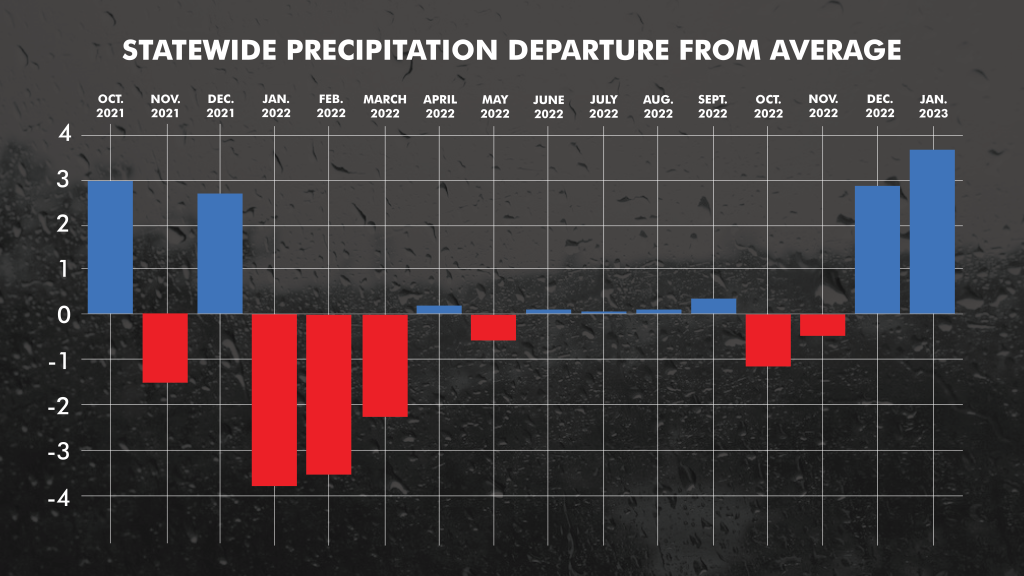- Following atmospheric rivers and extreme weather that helped fill reservoirs and dramatically increase the Sierra Nevada snowpack, the Department of Water Resources now expects to deliver 30% of requested water supplies – or 1.27 million acre-feet – in 2023, up from the initial 5% announced on December 1.
- The State Water Project’s two largest reservoirs (Oroville and San Luis) have gained a combined 1.62 million acre-feet of water in storage – roughly enough to provide water to 5.6 million households for a year.
With an above-average snowpack in the Sierra Nevada mountains, the state is cautiously optimistic that by early summer, there will be enough water stored in our reservoirs and aquifers to help relieve the worst effects of drought. While recent storms have been impressive, two months remain in the wet season and California could see a return to warm and dry conditions. Difficult conditions still exist in the Colorado River watershed, and many Californians rely on groundwater wells, which take much longer to recover from drought. DWR will conduct snow surveys on February 1, March 1, April 1, and May 1 and may further update the allocation as the water supply outlook becomes clearer with the new data. California traditionally receives half its rain and snow by the end of January. Water managers will reassess conditions monthly throughout the winter and spring. Starting in February, the assessments will incorporate snowpack data and runoff forecasts.
###



